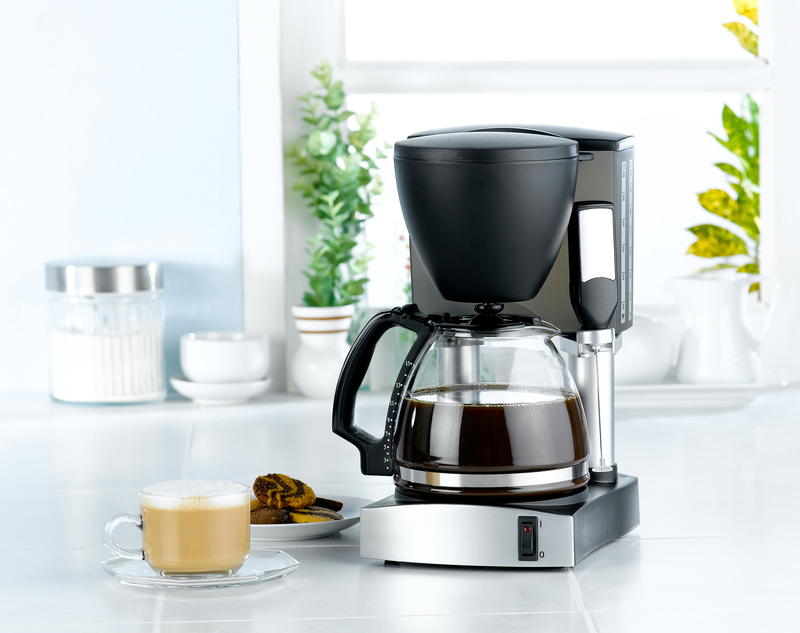Adios Grease: Master the Art of Cleaning Enamel Oven Trays
Posted on 22/05/2025
Adios Grease: Master the Art of Cleaning Enamel Oven Trays
Enamel oven trays are an essential component of every modern kitchen, providing durability, heat resistance, and an attractive non-stick surface for all your baking and roasting needs. However, anyone who's used them knows the frustration of sticky, burnt-on grease. If you're tired of scrubbing endlessly with little to show for your efforts, mastering the art of cleaning enamel oven trays can revolutionize your kitchen experience. In this comprehensive guide, you'll discover expert tips, step-by-step cleaning processes, and answers to common enamel tray cleaning dilemmas.
Why It's Important to Keep Enamel Oven Trays Clean
Cleaning enamel oven trays goes beyond visual appeal. Regular maintenance ensures:
- Hygiene: Prevents the buildup of bacteria and burnt food residues.
- Longevity: Maintains the integrity of the enamel coating, increasing the tray's lifespan.
- Flavor: Avoids lingering flavors transferring between dishes.
- Performance: Ensures even cooking and prevents smoking due to grease buildup.
Don't let stubborn grease and grime mar your cooking ambitions! Let's dive into the best methods for cleaning enamel oven trays so you can say adios grease once and for all.

Understanding Your Enamel Oven Tray
Before you begin, it's crucial to understand what makes enamel oven trays special. Enamel is a tough, glass-like coating fused to metal at high temperatures. This combination provides a non-porous, scratch-resistant surface that resists staining and can handle high heat. However, harsh abrasives or certain chemicals can damage the finish, so selecting the right cleaning method is key.
Common Issues with Enamel Trays
- Burnt-on grease that seems impossible to remove
- Stubborn stains from sauces, oils, or cooked-on food
- Loss of shine or discoloration after repeated usage
- Chipping due to abrasive cleaners or metal utensils
Basic Cleaning: The Foundation for Pristine Trays
Routine Cleaning After Each Use
A simple wipe-down after every use can prevent the buildup of tough grime and ensure long-term cleanliness. Follow these steps for basic enamel oven tray cleaning:
- Allow the tray to cool: Never submerge a hot tray in water as this may cause warping or enamel cracking.
- Remove loose debris: Use a soft-bristled brush or non-abrasive sponge to sweep away crumbs and food particles.
- Soak in warm, soapy water: A few minutes in soapy water will loosen most grease and residue.
- Gently scrub: Use a sponge or non-scratch pad to clean the surface. Avoid metal scouring pads.
- Rinse and dry: Rinse thoroughly with warm water and dry with a soft towel to prevent water spots.
Deep Cleaning Methods for Stubborn Grease & Burnt-On Residue
Sometimes, basic cleaning isn't enough. If your enamel oven tray is plagued with baked-on grease, it's time for a deep clean. There are several effective techniques that don't involve harmful chemicals or strenuous scrubbing.
Baking Soda & Vinegar Method
This classic combination uses gentle chemical reactions to loosen even the toughest grime:
- Sprinkle a generous amount of baking soda over the surface of the tray.
- Spray or pour white vinegar over the baking soda; it will fizz, helping to break down grease.
- Let the mixture sit for at least 20-30 minutes for maximum effect.
- Using a soft brush or sponge, gently scrub the tray to lift away loosened debris.
- Rinse thoroughly and dry.
Dishwasher Tablets: Not Just for Dishwashers!
Did you know that dishwasher tabs can work wonders on enamel trays?
- Fill your bathtub (or a large sink) with hot water and dissolve a dishwasher tablet inside.
- Place the tray flat in the water and let it soak for several hours or overnight.
- The enzymes in the tablet break down grease and food residues effectively.
- Once soaked, use a non-scratch sponge to gently clean the surface.
- Rinse and dry as usual.
Lemon Power: Natural Degreasing
Harness the power of citrus! The natural acidity of lemon can help cut grease while leaving behind a fresh scent.
- Cut a lemon in half and rub it directly onto greasy areas.
- Allow it to sit for 15-20 minutes.
- Scrub gently with a soft pad and rinse thoroughly with water.
- This method is gentle and eco-friendly--perfect for regular maintenance.
The "Overnight Soak" Secret for Extremely Dirty Trays
If you're dealing with enamel oven trays caked in years of stuck-on grime, an overnight soak may be your best bet:
- Fill the tray or a sturdy basin with hot, soapy water.
- Add a scoop of laundry powder or dishwashing liquid for extra cleaning power.
- Submerge overnight, allowing the mixture to break down grease and food particles.
- Next morning, use a soft brush or sponge to remove the softened residue.
The Do's and Don'ts of Cleaning Enamel Oven Trays
- Do use gentle, non-scratch cleaning pads.
- Do soak trays to loosen stubborn debris.
- Do dry thoroughly to prevent water spots or rust on edges.
- Don't use abrasive scouring powders or steel wool.
- Don't use harsh chemicals like bleach, which can erode enamel.
- Don't risk thermal shock by pouring cold water on a hot tray.
- Don't use metal utensils that can chip or scratch the enamel surface.
How to Remove Discoloration and Stains from Enamel Trays
After repeated use, enamel oven trays may develop discoloration or stubborn stains. Here's how to restore their shine:
- Baking Soda Paste: Mix a thick paste of baking soda and water. Apply to stains, let sit for 30-60 minutes, then scrub gently.
- Hydrogen Peroxide: Dampen a clean cloth with hydrogen peroxide and gently wipe stained areas. This can help lift discoloration without harsh chemicals.
- Commercial Enamel Cleaner: Choose a cleaner specifically designed for enamel cookware, following the product instructions.
Always rinse thoroughly after using any cleaner and dry with a soft cloth.
Preventative Care: Keep Your Trays Grease-Free
Maintaining clean enamel oven trays isn't just about how you clean, but also how you use and care for them. Follow these practical tips to keep trays looking and performing like new:
Use Oven Liners & Parchment Paper
Line your enamel tray with an oven liner or parchment paper during baking or roasting. These products catch grease and prevent sticky food residues, dramatically easing cleanup.
Avoid Cooking at Excessively High Temperatures
While enamel trays are temperature-resistant, ultra-high heat can cause stubborn grease to burn onto the surface. Roast and bake at the recommended temperatures for your recipes to minimize tough cleans.
Immediate Soak Post-Cooking
The sooner you attend to your tray, the easier cleanup will be. Soak your tray as soon as possible after it cools--not hours later--so that grease doesn't have time to set.
Eco-Friendly and Homemade Cleaning Solutions
When it comes to cleaning enamel oven trays, homemade solutions aren't just effective--they're also safer for your family and the environment. Some more eco-friendly options include:
- Salt and Vinegar Scrub: Mix coarse salt with white vinegar for a natural abrasive that lifts grime without scratching.
- Baking Soda and Hydrogen Peroxide Paste: This mild paste is excellent for lifting stains and restoring shine.
- Eco Dish Soaps: Look for plant-based dish soaps free from phosphates and chlorine for daily cleaning.
Troubleshooting Common Enamel Tray Cleaning Problems
What If My Enamel Tray is Chipped or Cracked?
While enamel is tough, it's not indestructible. If your tray develops chips or cracks:
- Do not use if the metal beneath is exposed--it can rust and contaminate food.
- Replace severely damaged trays for safety and hygiene.
- Prevent chips by using silicone or wooden utensils rather than metal ones.
White Spots After Cleaning
These are often caused by mineral deposits from hard water. Buff the tray with a little white vinegar, then rinse and dry.

Frequently Asked Questions About Cleaning Enamel Oven Trays
Can I Use Oven Cleaner on Enamel Trays?
Traditional oven cleaners are often too harsh for enamel-coated surfaces and may cause discoloration or surface damage. Stick to baking soda, vinegar, or mild detergents for best results.
How Often Should I Deep Clean My Enamel Baking Tray?
For regular home cooks, aim for a deep clean every 2-4 weeks, or whenever you notice buildup that won't come off with routine washing.
What If the Oven Tray Has Persistent Odors?
After cleaning, sprinkle the tray with baking soda, let it sit for an hour, then rinse. This helps neutralize lingering odors so your next roast doesn't taste like last week's dinner!
Conclusion: Master the Art, Enjoy the Results
Cleaning enamel oven trays doesn't have to be a dreaded chore. With the right techniques, affordable ingredients, and a little consistency, you can master the art of enamel tray maintenance and keep your cookware looking flawless. Not only will you boost hygiene and flavor, you'll also extend the life of your oven trays, making them a proud part of your kitchen for years to come.
So, the next time you face a greasy, stained enamel oven tray, remember these pro tips and say Adios Grease! Happy cooking--and even happier cleaning!
```
